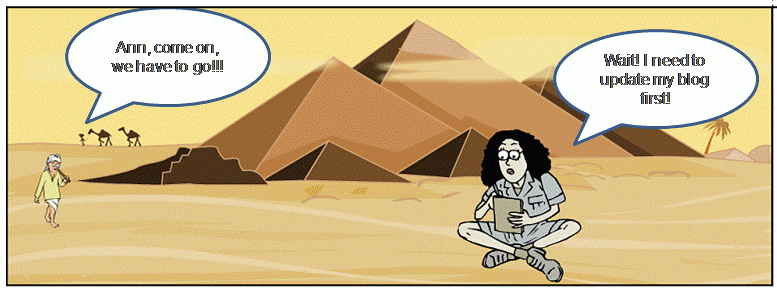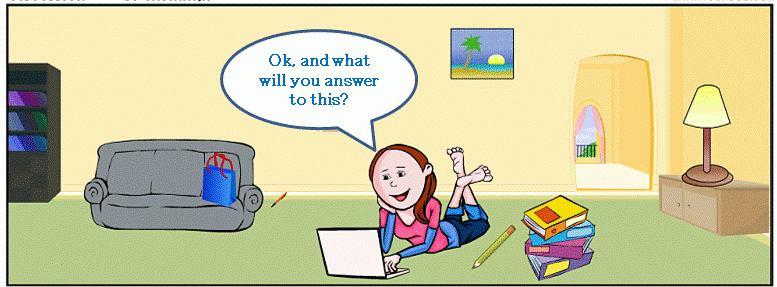14 Writing Tips for SEO-Friendly Blog Posts
If you’re in charge of your company’s blog, SEO is just as important for you as creating quality content that inspires engagement and generates leads. After all, if you’re not getting traffic, you’re not getting engaged readers or leads, either.
After you slave and sweat over writing those high-quality articles your readers love, use this checklist of 14 blog writing tips to properly optimize your blog posts.
Publish Regularly

Even if your writing is top-notch and your content’s amazing, if you don’t publish regularly, you don’t get search traffic. Search engines like Google want to give searchers the very best results for their queries. If you publish infrequently or sporadically, Google assumes your blog is not a good resource for searchers.
To show search engines your blog is a good resource for relevant queries, you need to publish high-quality new content often and regularly. Once a week is usually a good place to start. Use copywriting tips to make sure your articles are as excellent as possible.
Don’t Forget Meta Data
Meta titles and descriptions are an opportunity for you to tell:
- search engines what a blog post is about
- your audience why they should click through and read it
Remember to use keywords (but don’t stuff them in) and natural, fluent language.
Vary Content Types & Lengths
Always publishing the same type and length of content gets boring fast for both readers and search engines. So don’t forget about the following blog writing tip: when you vary the types and lengths of your content, not only are readers are more engaged, but search engines love your site and send you loads of traffic. That’s because the mix of lengths and media creates a better user experience and is more likely to be useful to searchers.
Media
Always include at least 1 image with every blog post, and use more if you can. Infographics, videos, and slides are excellent visual supplements to your regular written posts.
Length
For your written posts, 400 to 500 words should be the minimum. That length gives search engines ample text to crawl and plenty of keywords and context clues to help them understand what the article is about. Cap your posts at 5000 words; anything longer should be an ebook.
Claim Authorship

Setting up Google Authorship for your posts is just smart SEO for getting traffic from Google. It’s possible that Google may someday incorporate authorship into its search algorithm, so using this blog writing tip and setting Google Authorship up now will help you build authority and presence on Google+.
Claiming Google Authorship is also beneficial for SEO because it creates rich snippets for your blog posts when they appear in search. Results with the author’s photo, name, and Google+ information have higher click-through rates than plain results.
Do Your Keyword Research
Although SEO is moving toward building thought leadership and community with awesome content, keywords are still important. Find the best keywords you can and use them in all the right places in each post, namely:
- title
- URL if possible
- meta data
- headings and subheadings
- image names, descriptions, captions, and alt image tags
- throughout the content
Use Long-Tail Keywords
Longer keyword phrases might not get as high search traffic as shorter keywords, but they’re almost always more relevant to the searcher and much easier to rank for. Longer keyword phrases are often used by prospects who are looking for deeper, more specific information about a topic, making them ideal for blog posts.
Link to External Helpful Resources
Linking out to authoritative, trustworthy websites like Wikipedia, known thought leaders in the field, or any domain ending in .edu or .gov creates a better user experience and shows search engines you truly want to help searchers. They’ll reward you with higher rankings and more traffic.
Use Categories and Tags
One of the best things about blogs is how organized and interconnected they can be. Taking advantage of that with categories and tags helps both readers and search engines. A few rules of thumb to keep in mind:
- Use keywords for categories and tags where possible. This strengthens the keywords in each post and builds keyword-rich tag and category pages.
- You should have no more than 12 to 24 categories total.
- Each post should be in 3 categories or less.
- Tags should not be the same as categories because it confuses search engines.
- The sweet spot for tagging blog posts appears to be 5 to 10 tags per post, but you can have as many tags total as you want.
Link to Other Blog Posts
Using internal links to other blog posts while writing is a great copywriting tip that helps to get lots of benefits for both readers and search engines:
- helps readers find what they’re looking for
- helps your audience get to know, like, and trust you
- helps search engines crawl every page on your site
- helps search engines create an accurate sitemap
Link to Product, Landing, & Sales Pages on Your Website
Linking to these internal pages has the same SEO benefits as linking to other blog posts, with the added benefit of generating leads and sales. Since that’s what you want your business blog to do anyway, internal linking is a no-brainer.
Share and Encourage Sharing
Search engines depend more and more on social signals to deliver high-quality results to searchers, and visitors want to see social proof to determine if your blog is worth their time. This means you absolutely must share your blog posts on social media and make it easy for visitors to share. The best ways to encourage sharing are placing large social buttons in prominent places and using calls to action inviting them to share.
Facebook is especially important for Bing and Google+ is critical for Google, while Twitter, LinkedIn, Reddit, and other social services show visitors how often your content is read and shared.
Encourage Comments

Search engines love fresh, user-generated content, which is exactly what comments are. Encourage comments with a call to action at the end of each post, or by hosting a giveaway or contest where each comment is an entry.
Show Neighboring and Related Posts
Most blog platforms allow you to show newer, older, and similar articles at the bottom of each blog post, improving navigation for readers and crawling for search engines. Navigation and usability are important to search engines because they help visitors find what they’re looking for and create a better user experience, while a better crawling experience helps search engines understand your blog and website better.
Create Your Own Images
Every article you publish should have at least 1 good image, which makes it more visually appealing and easier to share through visual social media like Pinterest. Creating your own images when possible helps you get more traffic through image search and build awareness of your brand as it’s shared on Flickr, Pinterest, and other channels.
More SEO Blog Writing Tips
If your blog is built on WordPress, you’ll want to check out this definitive guide to SEO for WordPress written by plug-in creator Yoast. And take a look at these blog writing tips from SEOMoz – 21 tactics to get more traffic, many of which have plenty of SEO benefits as well.
What other blog writing tips have improved your SEO or lead generation? We’d love to hear your thoughts in the comments!

Comment (1)
I completely agree with you on user experience. If the site isn’t user-friendly, all the SEO work won’t matter.